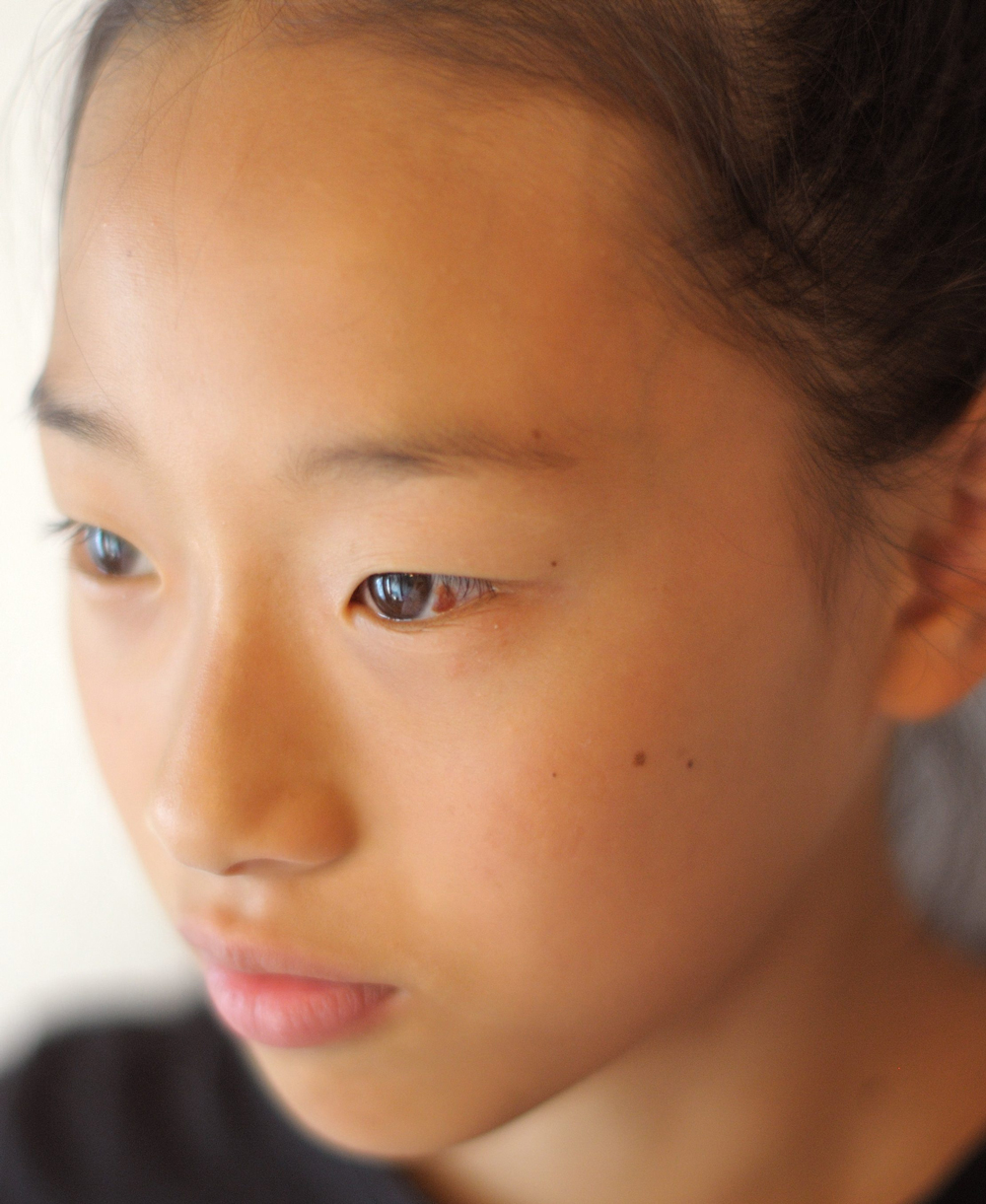NIKKOR - The Thousand and One Nights No.49

Nikkor-S Auto 55mm F1.2
In Tale 49, I will talk about large-diameter normal lenses. An attempt to develop an f/1.2 lens and an obsession with the focal length of 50mm… I will introduce the thoughts of the designer of the Nikkor-S Auto 55mm f/1.2 lens and the untold stories behind its development. Why did the focal length have to be 55mm? What was the key to achieving the small f-number of 1.2? Does it shoot well and what kind of pictures does it take?
Tonight, I will disclose the secrets of the Nikkor-S Auto 55mm f/1.2
by Haruo Sato
I. The Birth of Large-Diameter SLR Camera Lenses
As I noted in Tale 7, the competition for superfast lenses grew fierce in the 1950s. Every manufacturer commercialized large-diameter lenses, which included the ZUNOW 5cm f/1.1. The competition came to a halt with the release of the Canon 50mm f/0.95 from Canon Inc.
At that time, cameras were range-finder cameras. The largest benefit of the range-finder camera's optical system is a short flange back distance that imposes no restrictions on the back focal length. Simply put, the distance between the lens and film can be set freely. This means the range-finder camera requires no space for a mirror unlike the single-lens reflex (SLR) camera. Therefore, it was possible to develop Sonnar-type lenses with short back focal lengths and lenses that can be called a hybrid of the Gauss type and the Sonnar type.
Today, the Gauss type is synonymous with large-diameter normal lenses. But it has its own peculiar problem: the back principal point is located far ahead of the aperture diaphragm. That is, it is difficult to secure a long back focal length with a Gauss lens.
The world of photography then shifts to the age of SLRs, typical of which was the Nikon F. Superfast lenses of f/1.1 and f/0.95 achieved during the fierce competition become a pipe dream for SLR cameras.
Each camera maker adopted various back focal lengths for SLRs, generally ranging from 35 to 40mm. This means SLRs needed longer back focal lengths than range-finder cameras and posed a constraint, especially for designing 50mm lenses, very difficult to overcome at that time. The design of the Nikkor 5cm f/2, an early normal lens, shows traces of efforts to secure a sufficient back focal length. The solution was to add a weak concave lens in front of a Gauss type lens for a retro-focus effect that permits a larger back focal length.
What did other companies do to cope with this problem? They gave up the focal length of 50mm even for f/2 lenses and extended it by 5mm to 55mm to circumvent the issue. Lens designing had become difficult even for f/2 class lenses. But lens designers possessed strong desire to commercialize again the f/1.4 and f/1.1-1.2 lenses they had successfully produced for range-finder cameras. Every designer apparently thought it was problematical that the future camera system that made its debut with so much fanfare was actually inferior to the existing system. Nikon developed the Nikkor 5.8cm f/1.4 by extending the focal length by 8mm. However, designers at the time were not content with this solution. Through their persistent efforts, they finally developed the 50mm f/1.4.
II. Barrier of f/1.2
Developing a normal lens with an f-number of 1.2 was a considerably challenging theme in those days. We had to wait until the 1960s for the release of f/1.2 lenses from optics and camera manufacturers. Canon launched the Canon R58mm f/1.2 in 1962. The company could not design an f/1.2 lens with a focal length of 50mm. Canon improved the lens to 55mm in 1968, but it was not before 1980 that the focal length was changed to 50mm.
In the meantime, Nikon released the Nikkor 55mm f/1.2 in 1965. It was difficult to make it 50mm. But Nikon attained f/1.2 by making the focal length a mere 5mm longer. The goal of 50mm was achieved in 1978 with the AI-Nikkor 50mm f/1.2. Nikon was comparatively early in achieving an f-number of 1.2 with that focal length.
III. Development History and Designer
Now, let's take a look at some development history. The man who designed the Nikkor-S Auto 55mm f/1.2 was Mr. Yoshiyuki Shimizu, the originator of the Nikkor Auto who often appears in Nikkor - The Thousand and One Nights. For Mr. Shimizu, normal lens designing was his life work. He laid out all the specifications of normal lenses from 5cm f/2 to 50mm f/1.4, 55mm f/1.2 and 55mm f/2-1.2. I personally believe that Mr. Shimizu was one of the Nikon designers who were most well versed in the Gauss type at the time.
Let's look at development reports and drawings. According to the reports, the design was completed at the hottest time during the summer of 1964. In winter of that year, a prototype drawing was made and after trial volume production, a mass production drawing was created in the late spring of 1965.
The Nikkor-S Auto 55mm f/1.2 was released in the middle of winter that same year. The lens was later given a multilayer coating as the Nikkor-S Auto 55mm f/1.2 (c). The design was modified to use a new nitrate material and Nikon put on the market the New-Nikkor 55mm f/1.2 in 1975, achieving a reduction to the shortest shooting distance. In the spring of 1977, it became the AI-Nikkor 55mm f/1.2 with the adoption of the automatic maximum aperture indexing (AI) system. The long-sought 50mm f/1.2, the AI-Nikkor 50mm f/1.2, made its debut in 1978, putting an end to the Nikkor-S Auto 55mm f/1.2's 13-year long-selling history.
Its development definitely must have involved much difficulty because of its superfast speed. I take my hat off to Mr. Shimizu's efforts and patience while developing multiple products in parallel.
IV. Photographic Characteristics and Lens Performance

Look at this cross-sectional drawing. This is a typical Gauss (double Gauss) type lens. It is relatively easy to make large-diameter lenses with the Gauss type.
However, the available angle of view would be up to around 2ω = 63 degrees (focal length of about 35mm in terms of the 35mm format). With the Gauss type, it would be easiest to design a lens with an angle of view ranging from 46 to 24 degrees in the case of the 35mm format. In the normal lens range, f/1.8 to f/2 lenses can be made with six elements, while f/1.4 to f/1.2 lenses require seven elements for good aberration correction. These lenses are marked by a configuration in which two cemented lenses sandwiching an aperture diaphragm are in turn sandwiched by convex elements. Generally speaking, lenses with many convex elements on the image side of the lens tend to achieve better results for coma and spherical aberration correction.
How does the Nikkor-S Auto 55mm f/1.2 depict pictures? Let's consider it from the viewpoints of both aberration characteristics and a spot diagram. Aberration values, a modulation transfer function (MTF) chart and point images in the design report show us how difficult it was to develop a superfast lens with an f-number of 1.2.
The lens is marked by its spherical aberrations. In order to obtain good sharpness with a large-diameter, f/1.2 lens, it is necessary to minimize spherical aberrations. This lens effectively corrects spherical aberrations without aspherical elements by, so to speak, fighting fire with fire - generating higher spherical aberrations by using a high-curvature lens surface. The design concept can be seen in the field curvature as well. The meridional image plane is slightly under-corrected compared with the sagittal plane and the two planes almost match each other up to half the distance away from the center of the image with only small astigmatism. Typical of large-diameter lenses, it has good axial chromatic aberrations and lateral chromatic aberrations, making stopping-down very effective in correcting aberrations. The problem is coma aberrations. As it is a large-diameter, f/1.2 lens, it produces large meridional and sagittal coma. Especially, sagittal coma flare in the four corners of the image is considerable. The flare shape greatly affects point images. Distortion is -2% at infinity focusing, an average value for a large-diameter lens. Like other general Gauss-type lenses, all aberrations become under-corrected at close-up shooting. This phenomenon reduces sharpness, but is good for blurring out the background. This is why Gauss-type lenses are usually often used for portrait and macro photography.
Aberrations of the top-of the line f/1.2 lens at the time of the Nikon F launch were not corrected effectively. Nonetheless, it was a deftly designed lens with no major flaw for a trail-blazing 55mm f/1.2 lens. We can see the excellent results of Mr. Shimizu's painstaking efforts.
Now, let's study its image forming using a spot diagram. Points are well imaged in the center with less flare. But flare becomes increasingly visible toward the periphery in both meridional and sagittal directions. Modern lenses tend to correct meridional direction flare only, which is relatively easy, for higher MTF. But if meridional direction flare alone is corrected, point images show comet-like flare and become asymmetrical. From the viewpoint of photographic depiction, the shapes of point images of the 55mm f/1.2 would produce better, if slightly less sharp, results. We can observe the master's art here as well. However, vignetting removes meridional coma flare from point images far from the center of the picture, leaving comet-like flare with visible sagittal coma flare. This must have been the maximum possible at that time when no aspherical lenses were available.
V. Photographic Performance and Samples
Next, let's have a look at some sample photos, broken down by focal length.
Open aperture at f/1.2
The resolution is comparatively good at the center, but the image is surrounded by veil-like flare. Flare increases toward the periphery and peaks out at a distance some 60% from the center. It then decreases slightly, affected by vignetting. As a whole, depiction is delicate and the resolution is a bit low in the four corners. But color bleeding is small and coloration is clear and favorable.
f/1.4 - 2
Stopping down the lens to f/1.4 reduces the veil-like flare and vignetting, but does not change the resolution much. At f/2, the resolution improves from the center to the middle area with flare disappearing, but not in the periphery, especially the four corners where resolution and flare improve little.
F2.8 - 4
The resolution improves considerably with flare mostly gone and sufficient sharpness is obtained, excluding the four corners. At f/2.8, high-quality resolution coexists with softness, while high resolution is achieved at f/4.
F5.6 - 8
Depiction is consistent over the entire picture with high sharpness achieved. Possibly this is the best image quality among all the f-stop ranges.
F11 - 16
Depiction is consistent over the entire picture with high sharpness obtained. Stopping down the lens to f/16 mars the resolution slightly due to diffraction.
If you need sharpness, shoot in the aperture range of f/5.6-11 to produce good results. For soft, distinctive depiction in still life photography and portrait shooting, try f/1.2-2. If you want soft depiction with some extent of sharpness, stop it down to f/2.8. Through the shooting tests, the Nikkor-S Auto 55mm f/1.2 proved to be a lens favored by connoisseurs, which changes its depiction every time the aperture is changed.
Look at the samples to check depiction characteristics.

Nikon D3X, Nikkor-S Auto 55mm f/1.2
Exposure: 1/160 second, f/1.2
Sensitivity: ISO 400
Image quality: RAW
White balance: Auto
D-Lighting: Auto
Picture Control: Neutral
Date: August, 2011
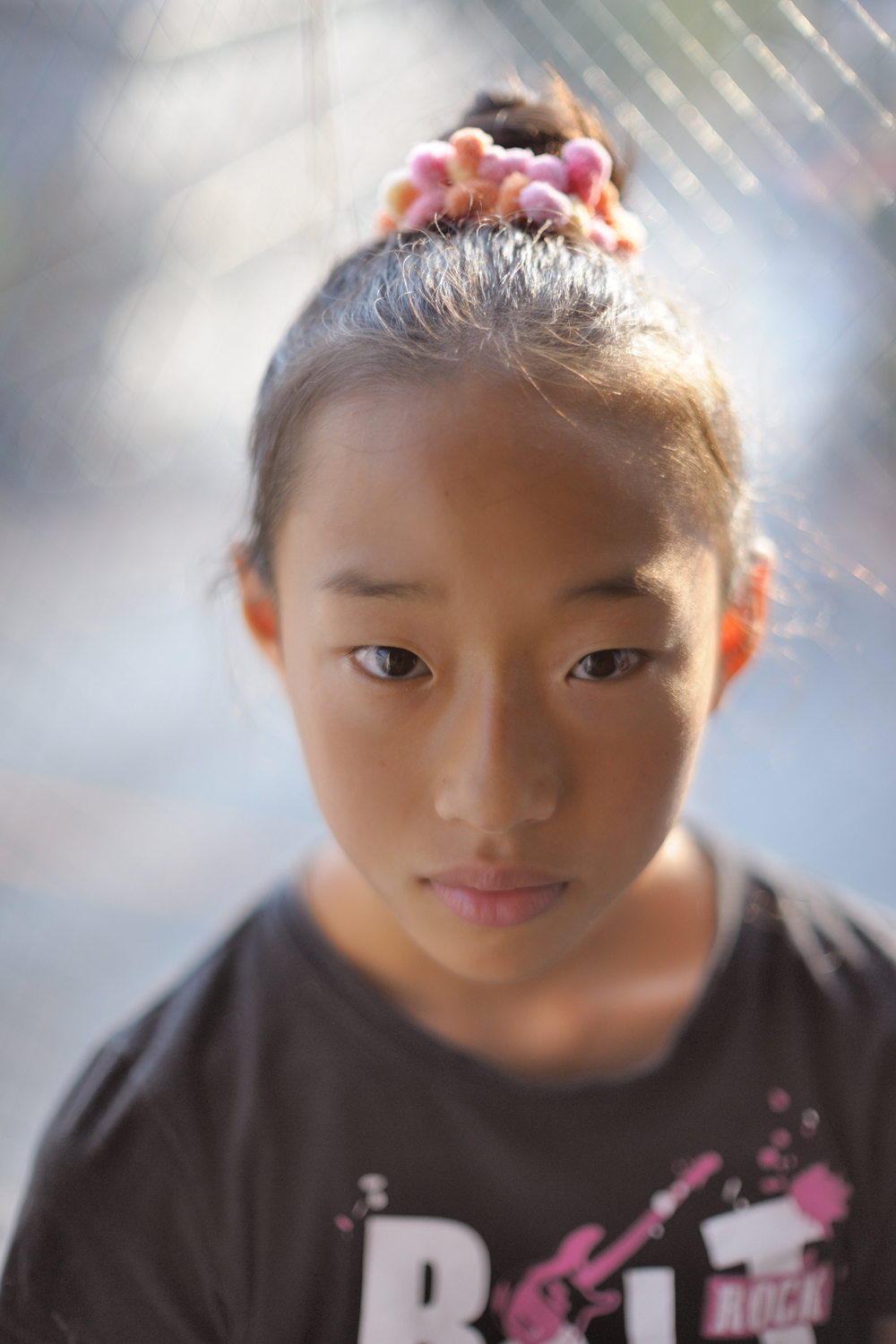
Nikon D3X, Nikkor-S Auto 55mm f/1.2
Exposure: 1/3200 second, f/1.2
Sensitivity: ISO 400
Image quality: RAW
White balance: Auto
D-Lighting: Auto
Picture Control: Neutral
Date: August, 2011
Samples 1 and 2 are designed to feature the soft depiction of the lens and reproduce an airy feeling. The pictures were taken at around the shortest shooting distance of 60cm/1ft 11.6 in., using the open aperture of f/1.2 for a shallow depth of field. The background of Sample 1 has a sequence of points. Its bokeh has no flaw and depiction is good. The sharpness of the eye on which the lens was focused is fine and the depiction of the blurred area is smooth and excellent. Look at the enlarged image of Sample 1. You can see that the lens is effective for three-dimensional depiction. The disappearing line of the chin, blurred thin hair and the blurring of the eye with a three-dimensional feel… All are completely satisfying. The Nikkor-S Auto 55mm f/1.2 can be called a lens that achieves high fidelity in the three-dimensional direction. Sample 2 was shot deliberately against the light in front of a lattice-shaped reflective object. The back blurring is flawless and the generation of double-line bokeh is curbed. The sharpness of the focused area is good and the eye and hair are richly reproduced.
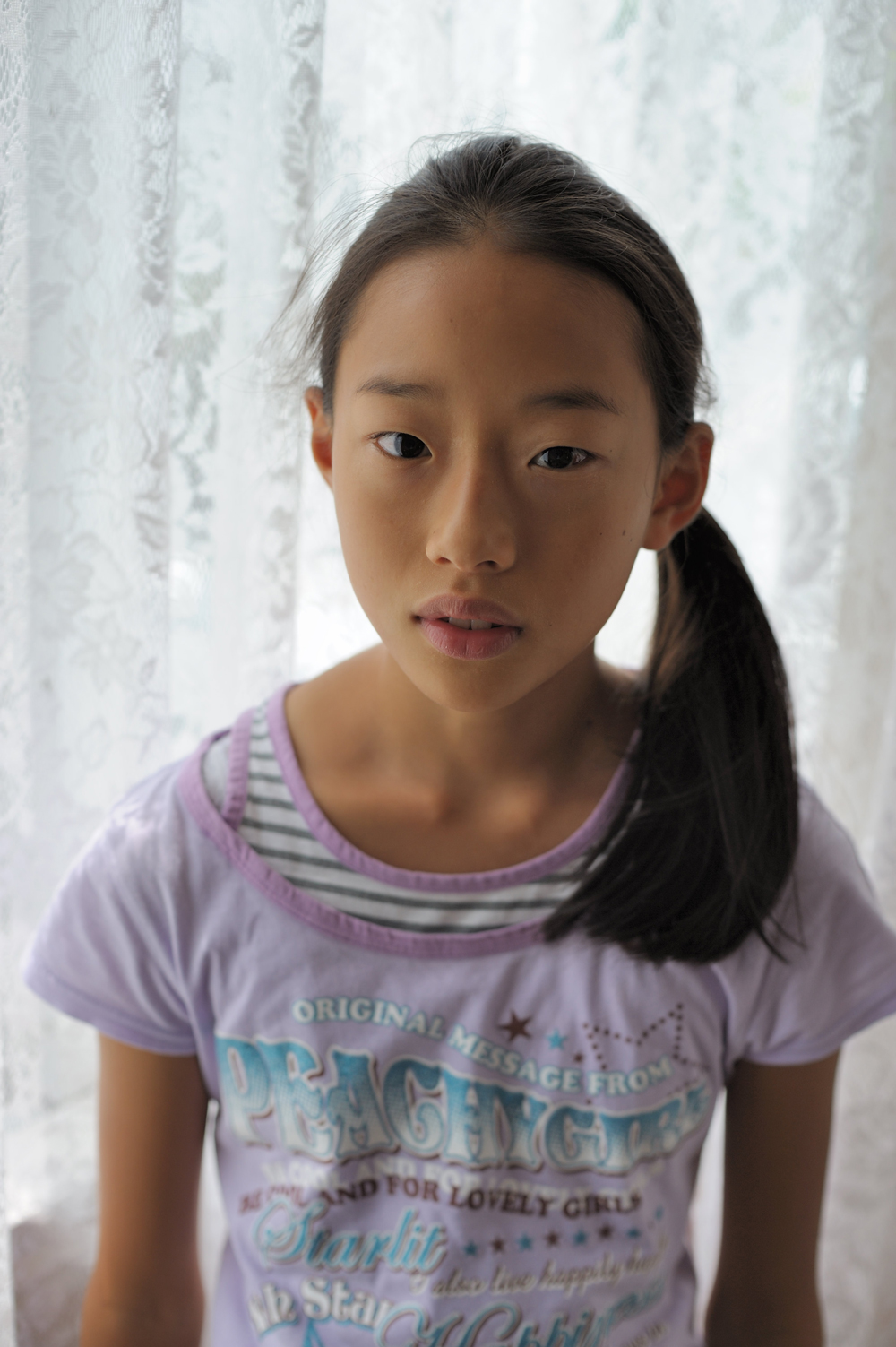
Nikon D700, Nikkor-S Auto 55mm f/1.2
Exposure: 1/800 second, f/2.8
Sensitivity: ISO 200
Image quality: RAW
White balance: Auto
D-Lighting: Auto
Picture Control: Neutral
Date: August, 2011

Nikon D700, Nikkor-S Auto 55mm f/1.2
Exposure: 1/2000 second, f/2.8
Sensitivity: ISO 200
Image quality: RAW
White balance: Auto
D-Lighting: Auto
Picture Control: Neutral
Date: August, 2011
Samples 3 and 4 were taken to check the lens depiction at f/2.8. In both samples, the focused area has expanded with improved sharpness. However, its depiction has not lost its softness. Sample 3 was backlit shot against the soft light. Observe flare and the background bokeh. The bokeh is flawless and there is no unfavorable chromatic flare. As for Sample 4, look at the lens' depiction at a relatively medium shooting distance. The back bokeh is presented flawlessly and the sharpness of the focused area is good. From these samples, I can say that excellent portraits can be taken by trying various f-stops within the range of the open aperture to f/2.8.
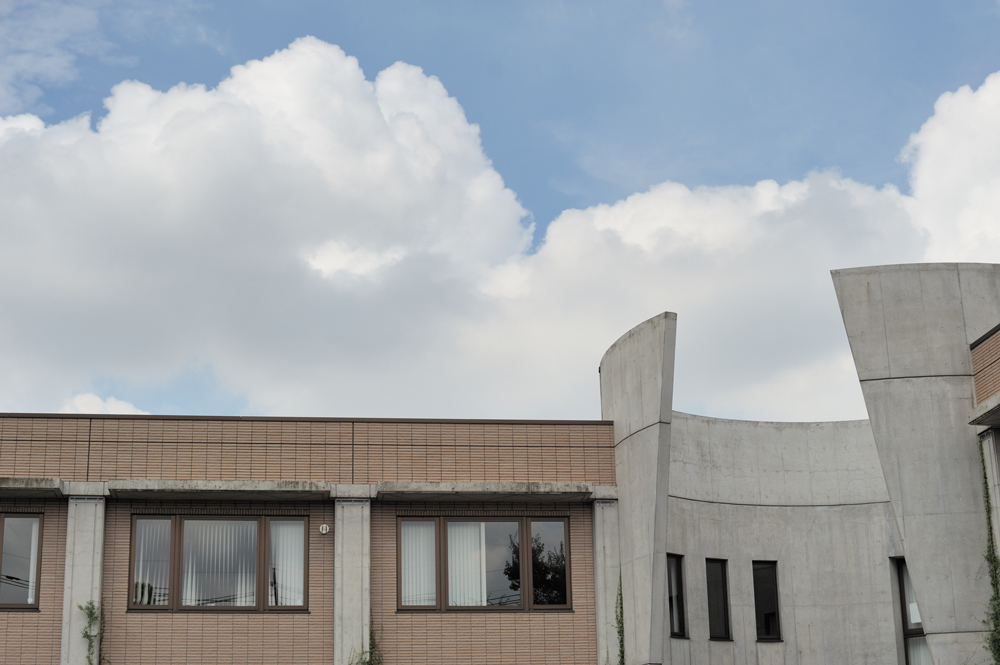
Nikon D700, Nikkor-S Auto 55mm f/1.2
Exposure: 1/3200 second, f/4
Sensitivity: ISO 200
Image quality: RAW
White balance: Auto
D-Lighting: Auto
Picture Control: Neutral
Date: August, 2011
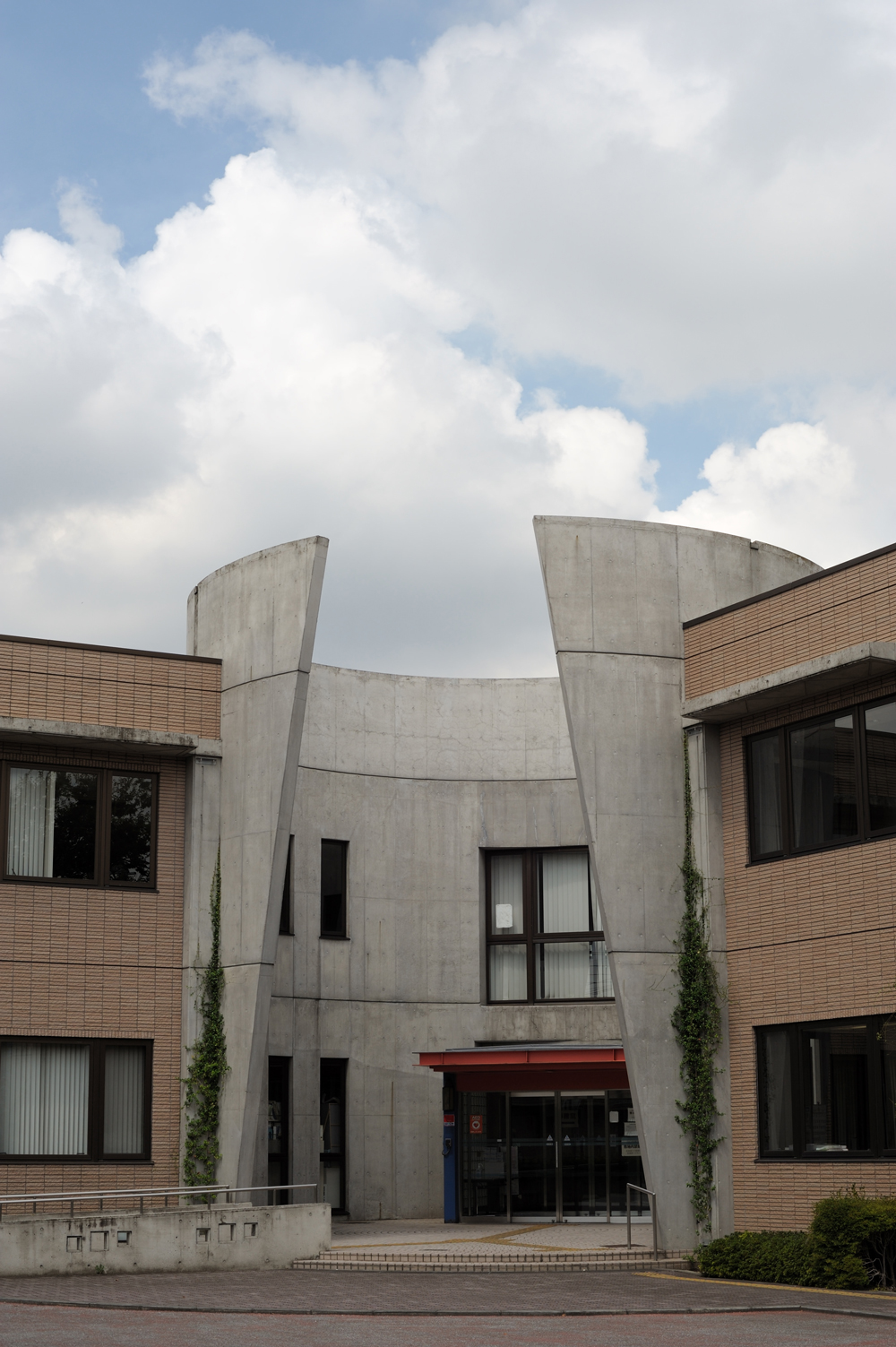
Nikon D700, Nikkor-S Auto 55mm f/1.2
Exposure: 1/1000 second, f/5.6
Sensitivity: ISO 200
Image quality: RAW
White balance: Auto
D-Lighting: Auto
Picture Control: Neutral
Date: August, 2011
The lens was stopped down to f/4-5.6 for Samples 5 and 6. At f/4-5.6, the softness unique to a large-diameter lens disappears and the image is sharp to the periphery. Sample 5 was shot at f/4. The building wall is clearly reproduced to the periphery of the picture. Sample 6 was taken at f/5.6. When stopped down this far, the lens produces an image sharp to the periphery, showing its best depiction characteristics. For landscape photography, the aperture range of f/5.6 to f/8 should be most appropriate.
As these samples show, the Nikkor-S Auto 55mm f/1.2 is a refined lens that changes its depiction characteristics every time a different f-number is selected. Thus, it can shoot portraits and still lifes as well as landscapes when adequately stopped down. It is safe to say that the Nikkor-S Auto 55mm f/1.2 is a lens favored by connoisseurs.
VI. Obsession with 50mm
Having read the tale of the 55mm f/1.2 lens, did you wonder why the designer stuck to 50mm? That is because normal lenses for the 35mm format have a long history. The focal length of the normal lens was set at 5cm (50mm) by engineers of Ernst Leitz GmbH, notably Oskar Barnack and Max Berek. Then, why did they choose 50mm? There are many stories, typical of which is that the angle of view of 50mm (46 degrees diagonal, 40 degrees horizontal) is the closest to the field of view of the human eye when it is not closely focused. Other theories are that the diagonal distance of the image is close to the focal length (precisely, however, it is not 50mm), that wide lens and telephoto lens characteristics both become least evident at the focal length of 50mm and that lens characteristics are optimum at 50mm (precisely, however, such focal length cannot be limited to 50mm). In any case, only Barnack and Berek, who built this system, know the truth.
The certain fact is that the first 35mm camera of Leitz came with the Leitz Anastigmat (later called Elmax) 5cm f/3.5 as the standard lens. Camera makers of the world all started manufacturing cameras modeled after Leica, together with 5cm (50mm) normal lenses. Because of this historical background, they have been continuing producing 50mm lenses for many long years and developers and users alike have become familiar with the angle of view of 50mm lenses. Based on this history and tradition, 50mm lenses were positioned as normal. Therefore, developers at the time apparently wanted to make standard lenses for SLR cameras with the same angle of view as in the era of range-finder cameras. Designers' obsessiveness is the seed of progress and development. The development of normal lenses started with 58mm and shifted to 55mm and then to 50mm.
VII. 50mm, but Is It Actually 51.6mm?
What we call the focal length of 50mm is actually a nominal value. The designed value has not necessarily been exactly 50mm. As noted above, the normal lens started with the Leitz Anastigmat 5cm f/3.5. The actual focal length of the Leitz 5cm normal lens at the time was 51.6mm. Leica cameras were not originally of the interchangeable-lens type, but after their introduction, many optics makers started manufacturing interchangeable lenses for the Leica.
It was convenient for them to use the same focal lengths as Leica lenses in view of the viewfinder and range finder. This is why long-established Japanese optics manufacturers and camera makers designed their nominal 50mm normal lenses with the actual focal length of 51.6mm. This practice was handed down to the age of SLR cameras and its history and tradition are still alive. The actual length of 51.6mm carries the weight of history.

NIKKOR - The Thousand and One Nights
The history of Nikon cameras is also that of NIKKOR lenses. This serial story features fascinating tales of lens design and manufacture.


